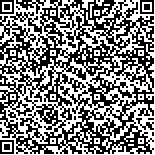| 引用本文: | 黄慧,倪峰,郭丹,张月芬,鄢雪梨,饶雪娥,叶桦珍.基于UPLC指纹图谱的青黛提取工艺评价研究[J].中国现代应用药学,2017,34(4):533-537. |
| HUANG Hui,NI Feng,GUO Dan,ZHANG Yuefen,YAN Xueli,RAO Xue'e,YE Huazhen.Application of UPLC Fingerprint in Evaluation of Extraction Process of Indigo Naturalis[J].Chin J Mod Appl Pharm(中国现代应用药学),2017,34(4):533-537. |
|
| |
|
|
| 本文已被:浏览 2149次 下载 1540次 |

码上扫一扫! |
|
|
| 基于UPLC指纹图谱的青黛提取工艺评价研究 |
|
黄慧, 倪峰, 郭丹, 张月芬, 鄢雪梨, 饶雪娥, 叶桦珍
|
|
福建卫生职业技术学院, 福州 350101
|
|
| 摘要: |
| 目的 建立青黛UPLC指纹图谱,用于评价其提取工艺。方法 采用单因素实验设计,以UPLC指纹图谱的共有峰数目、特征指纹峰总峰面积、有效成分含量为评价指标,分别对影响青黛加热回流提取法、超声提取法、微波萃取法的提取溶剂、提取温度、提取时间及物料比等因素进行优化,筛选并评价提取工艺。结果 3种提取法的最佳提取溶剂均为N,N-二甲基甲酰胺,最佳提取工艺分别为加热提取法(物料比0.25 g︰30 mL,提取温度20 ℃,提取时间60 min)、超声提取法(物料比0.25 g︰30 mL,提取温度50 ℃,提取时间60 min)、微波萃取法(物料比0.25 g︰30 mL,提取温度50 ℃,提取时间8 min)。在最佳提取工艺下,微波萃取法、超声提取法和加热回流法的提取物的特征峰数依次为34,30,11,总峰面积依次为3 495.6,2 904.9,420.9。同时,微波萃取法得到的靛玉红含量分别为超声提取法和加热回流法的1.63倍和22.57倍。超声提取法得到的靛蓝含量分别为微波萃取法和加热回流法的2.52倍和11.40倍。结论 以UPLC指纹图谱的共有峰数目、特征指纹峰总峰面积和靛玉红含量为评价指标,微波萃取法优于超声提取法和加热回流法;以UPLC指纹图谱的共有峰数目、特征指纹峰总峰面积和靛蓝含量为评价指标,超声提取法优于微波萃取法和加热回流法。 |
| 关键词: 青黛 UPLC指纹图谱 提取工艺 评价 |
| DOI:10.13748/j.cnki.issn1007-7693.2017.04.013 |
| 分类号: |
| 基金项目:福建省中青年教师教育科研项目(JA15778,JA11318);福建卫生职业技术学院立项科研项目(2016-2-7) |
|
| Application of UPLC Fingerprint in Evaluation of Extraction Process of Indigo Naturalis |
|
HUANG Hui, NI Feng, GUO Dan, ZHANG Yuefen, YAN Xueli, RAO Xue'e, YE Huazhen
|
|
Fujian Health College, Fuzhou 350101, China
|
| Abstract: |
| OBJECTIVE To evaluate the extraction process by establishing the UPLC fingerprint of Indigo Naturalis. METHODS The study was designed as a single factor experiment, the number of the common peak, total area of the characteristic fingerprint peak and active ingredient content of the UPLC fingerprint were taken as evaluation indexes to optimize factors including extraction solvent, extraction temperature, extraction time and reactant ratio that might affect heating-circumfluence extraction, ultrasonic extraction and microwave extraction, so as to screen and evaluate the extraction process. RESULTS The optimum extraction solvent of the 3 extraction methods was N,N-dimethylformamide, and the optimum extraction technique was heating-circumfluence extraction (reactant ratio was 0.25 g︰30 mL, extraction temperature was 20 ℃, and extraction time was 60 min), ultrasonic extraction (reactant ratio was 0.25 g︰30 mL, extraction temperature was 50 ℃, and extraction time was 60 min) and microwave extraction (reactant ratio was 0.25 g︰30 mL, extraction temperature was 50 ℃, and extraction time was 8 min), respectively. With the application of the optimum extraction technique, the characteristic peak number of microwave extraction, ultrasonic extraction and heating-circumfluence extraction was 34, 30 and 11, respectively; and corresponding total peak area was 3 495.6, 2 904.9 and 420.9, respectively. In addition, the content of indirubin extracted by microwave extraction was 1.63-fold and 22.57-fold of that by ultrasonic extraction and heating-circumfluence extraction; meanwhile, the content of indigo obtained by ultrasonic extraction was 2.52-fold and 11.40-fold of that by microwave extraction and heating-circumfluence extraction. CONCLUSION Microwave extraction may be superior than ultrasonic extraction and heating-circumfluence extraction with the number of the common peak and total area of the characteristic fingerprint peak in the UPLC fingerprint, and the content of indirubin as evaluation indexes; besides, ultrasonic extraction may be better than microwave extraction and heating-circumfluence extraction when using the number of the common peak and total area of the characteristic fingerprint peak in the UPLC fingerprint, and the content of indigo as the evaluating indicators. |
| Key words: Indigo Naturalis UPLC fingerprint extraction process evaluation |
|
|
|
|
